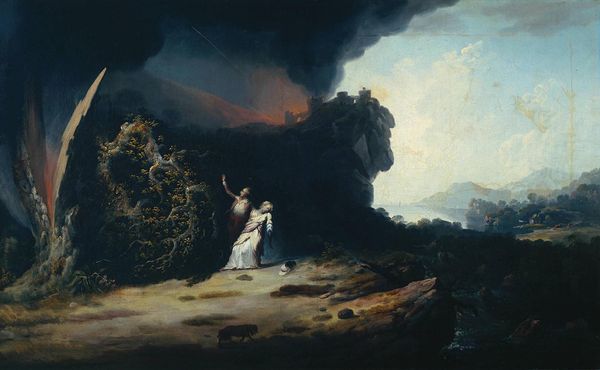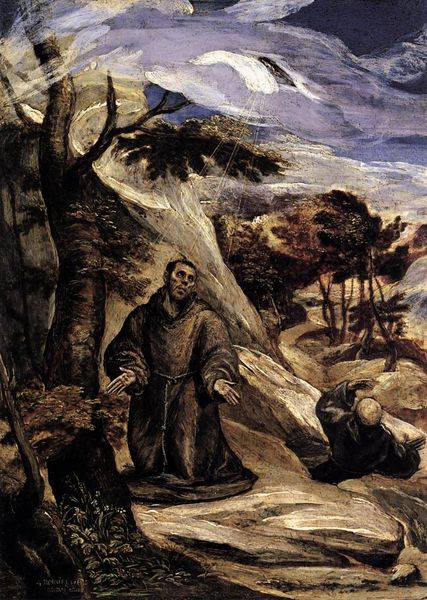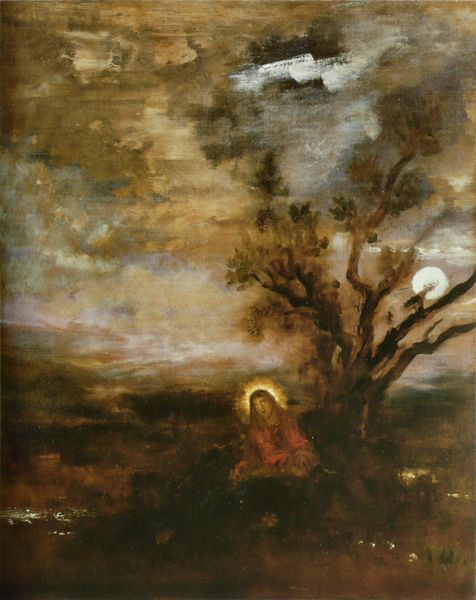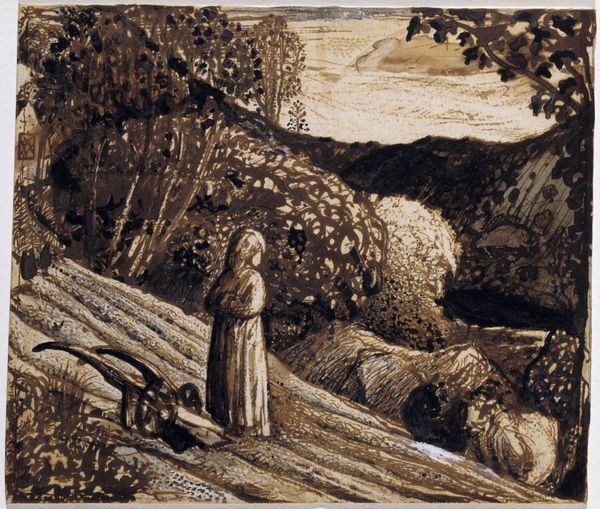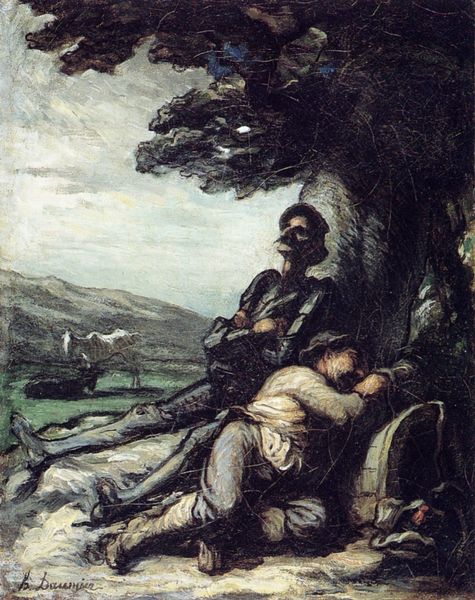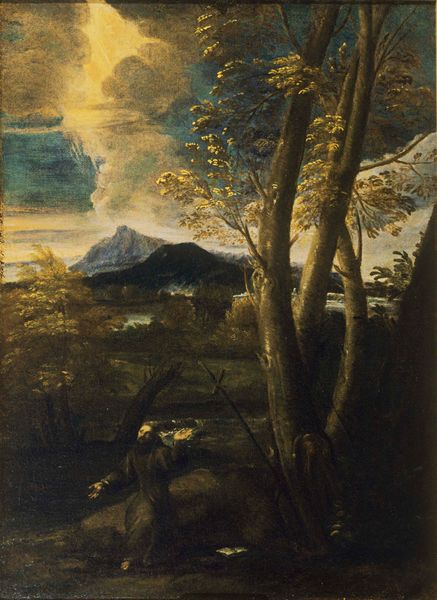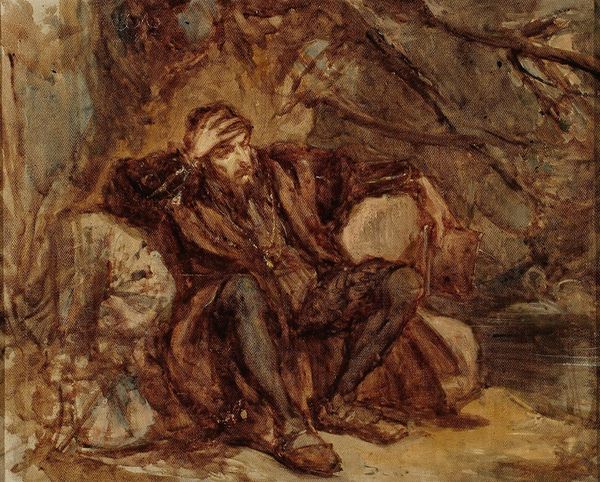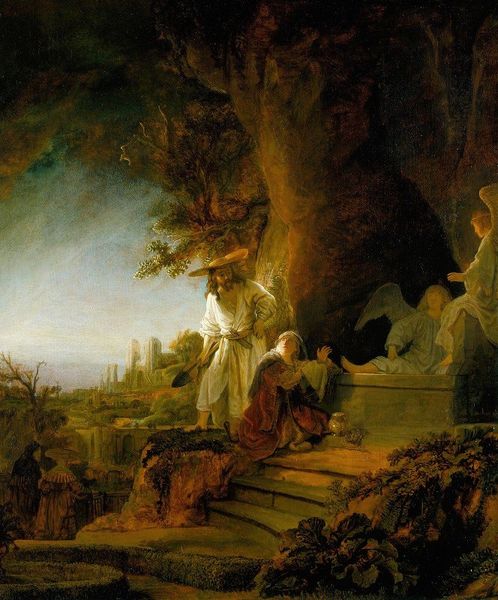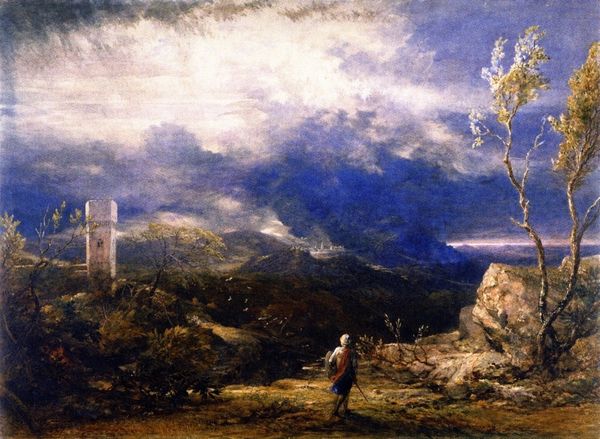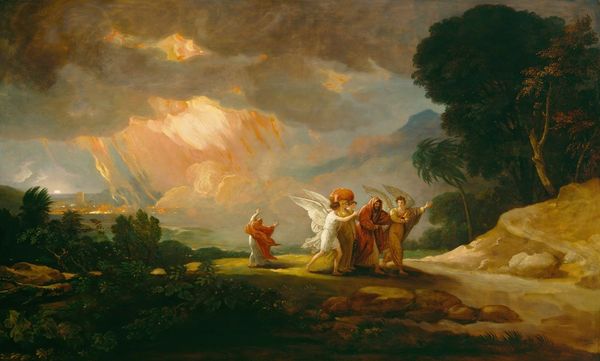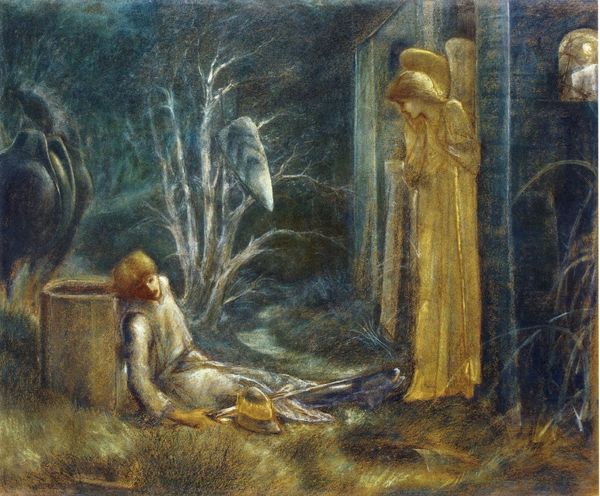
painting, oil-paint
#
abstract expressionism
#
painting
#
oil-paint
#
landscape
#
figuration
#
oil painting
#
romanticism
#
expressionism
#
symbolism
#
expressionist
Copyright: Public domain
Editor: So, here we have Albert Pinkham Ryder's "The Tempest," an oil painting, and well, I find it incredibly evocative. It feels so charged with emotion. What strikes you most about it? Curator: I think Ryder's choice of subject and his expressive brushwork reveals a powerful commentary on the Romantic ideal. It isn't merely depicting a storm; he’s presenting us with the sublime—that terrifying yet awe-inspiring experience of nature's power. How do you think his artistic choices were influenced by his time period? Editor: Well, Ryder was working in the late 19th century, right? Which means he was moving away from a more academic style to focus on emotional expression and subjective experience... a strong symbolist undertone perhaps? Curator: Precisely! We need to consider the institutional and social context: exhibitions were opening up to more diverse styles, allowing artists to experiment with their personal vision. This period was a shift from straightforward representation to exploring inner emotional landscapes. What role do you see the figures playing within this dramatic landscape? Editor: I think their vulnerability highlights the insignificance of humanity against this natural backdrop. Is that reading too much into it? Curator: Not at all. Ryder positions them carefully to draw the viewer's eye into the storm, making the emotional impact so much more potent. Furthermore, Ryder was known for building up layers of paint over long periods. Can you see any practical effect or message that is brought by it? Editor: This layering adds to the intensity, the thickness, the density... it's as though he's sculpting with the paint itself. I suppose all these practices contributed to elevate a more socially diverse and personal way to approach and appreciate art. Curator: Indeed! The materiality embodies that turbulent inner state. These social changes in the art world encouraged, and ultimately gave way to a diversity in creative voices and vision, making art more accessible and a public resource for exploring the self in society. Editor: This has given me a totally new appreciation for the societal dynamics that contributed to "The Tempest," which in turn deepens the overall experience of viewing this piece. Curator: Mine as well. Thank you!
Comments
No comments
Be the first to comment and join the conversation on the ultimate creative platform.

